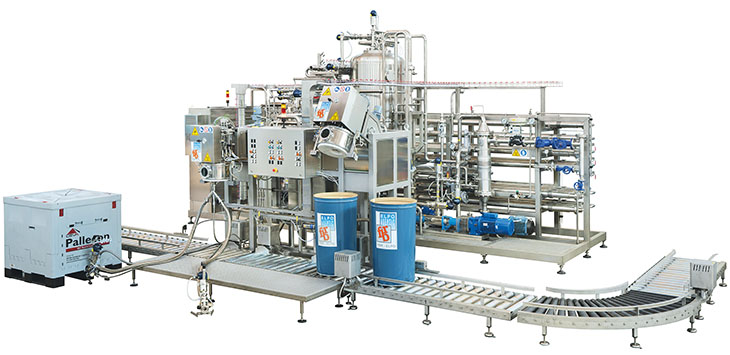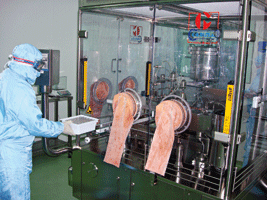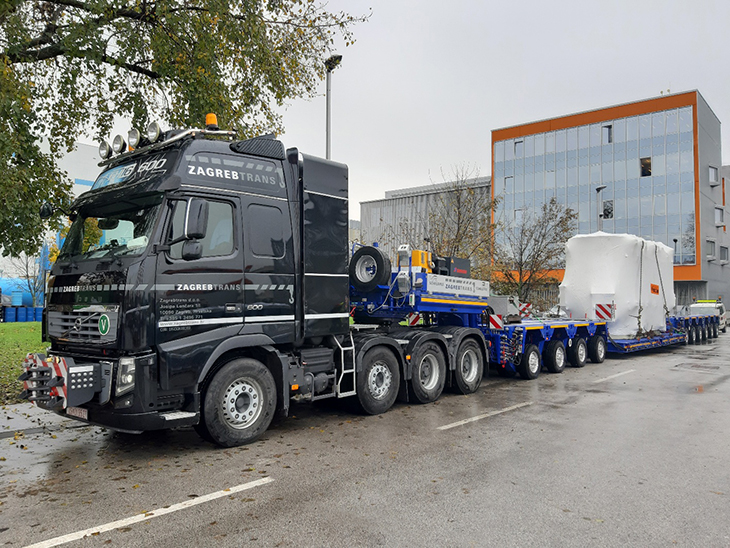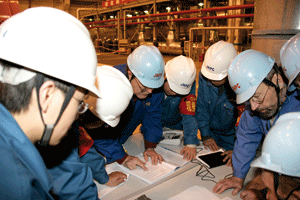Warehouse operations are critical to a supply chain’s success, but many are inefficient. The connected warehouse — a system where internet of things (IoT) devices and related technologies provide more insight and control over operations — provides a solution.
The logistics industry has realized the need for these new technologies, with 77% of organizations today saying they’re serious about maximizing their data-driven performance. However, how to achieve that goal isn’t always clear, especially given Industry 4.0’s relative newness. While each connected warehouse must address unique needs and restraints, some general guidelines can highlight the path forward.
1. Identify Key Areas of Development
The first step in building a connected warehouse is determining what you hope to gain from it. High investment requirements are one of the leading barriers to Industry 4.0 adoption, but these technologies’ efficiency saves money in the long run. Capitalizing on that potential ROI means first applying Industry 4.0 technology where it will have the greatest impact before spending elsewhere.
Identify your most significant inefficiencies, then compare these to available technologies to see what has the most potential to improve. This analysis will also help you set goals to monitor the success of your Industry 4.0 initiatives.
2. Use a Warehouse Management System
One specific technology any connected warehouse needs is a warehouse management system (WMS). WMS platforms provide a single access point for your warehouse's data, controls and workflows. That consolidation and ease of access are critical to making the most of IoT connectivity and addressing inefficiencies.
WMS solutions are the most popular type of software in supply chain management because they’re versatile and comprehensive. Regardless of what other technologies you use, a WMS provides the insight and control you need to capitalize on them fully. Many also come with helpful automated features to streamline operations.
3. Choose an Asset Tracking Solution
Next, your warehouse needs a solution for tracking asset locations. Many facilities rely on manual inventory methods, which are slow and prone to error. Using technologies like RFID tags, Bluetooth beacons, near-field communication (NFC) or other IoT sensors instead gives you more reliable, real-time updates on your packages’ locations, inventory levels and conditions.
Which of these technologies is most helpful depends on your specific situation. Barcodes are some of the most popular because they’re relatively affordable and easy to implement, but RFID tags can provide more information, which larger, more complex warehouses may need. Refer to your goals and common issues to determine which is best for you.
4. Implement Predictive Maintenance
Equipment maintenance is another common area of inefficiency a connected warehouse can address. Running forklifts, conveyors and other machines to failure is costly and leads to significant unplanned downtime. Scheduled maintenance helps prevent breakdowns but can create unnecessary downtime from unneeded repairs. IoT-based predictive maintenance is the ideal solution.
Identify your mission-critical equipment and deploy IoT maintenance sensors in these systems to optimize their repair costs and uptime. You can expand predictive maintenance to other machines as you see returns from this investment. You can further reduce these costs by renting equipment you don’t use as often, as this allows for more capital flow due to lower operating costs for less-used machines.
5. Automate Where Possible
Connected warehouses work best when you generate as much relevant workflow data as possible. One of the best ways to maximize that data is through automation. If you can automate a task with an IoT-connected robot, that machine will generate helpful information about its efficiency, workflow and obstacles you can refer to for continuous improvement.
Start by automating your most inefficient manual tasks. In many warehouses, picking is the ripest for automation, as it’s repetitive and slow and many automated picking solutions are readily available.
6. Invest in Cybersecurity
Cybersecurity is an often overlooked but essential step in building a connected warehouse. IoT vulnerabilities are some of the most common cybersecurity risks today, as these devices provide more potential entry points for hackers and often have minimal built-in security features. Consequently, your Industry 4.0 initiatives may cause more harm than good if you don't secure your IoT systems.
Run IoT devices on a separate network from more sensitive systems and data to prevent attackers from using them as easy gateways. You should also encrypt all IoT traffic, use up-to-date antivirus software, change default passwords and deploy automated network monitoring tools. It’s essential to educate employees on security best practices to address threats like phishing, which capitalize on human error.
7. Review KPIs Often
After following these other steps, monitor your progress to gauge the effectiveness of your connected warehouse initiatives. Refer to the goals and benchmarks you set before investing in these technologies and compare them to KPIs now.
If your KPI scores meet or exceed your goals, you can confidently expand technologies like IoT connectivity and automation to new workflows. If things have remained the same or declined, review your data to see why. These reviews will help you understand what you should do differently in future Industry 4.0 investments to achieve a better ROI.
Start Building Your Connected Warehouse Today
Today’s supply chains need the efficiency and transparency of a connected warehouse. Achieving that goal starts with understanding what technologies and processes it encompasses and setting relevant expectations.
Follow these steps to make the most of IoT connectivity and related technologies. A careful, thoughtful approach can help you capitalize on this tech’s full potential without facing common obstacles.


























